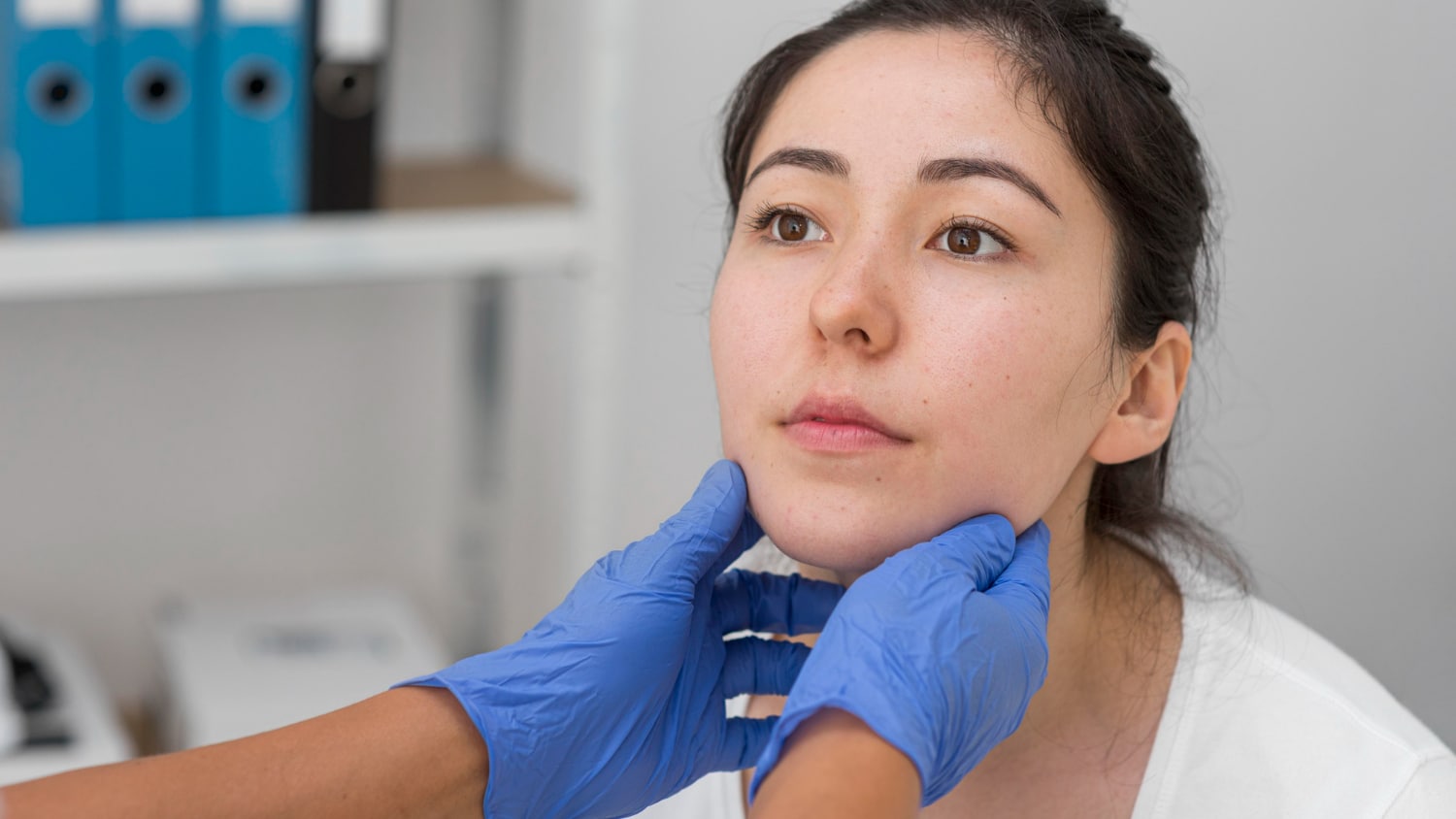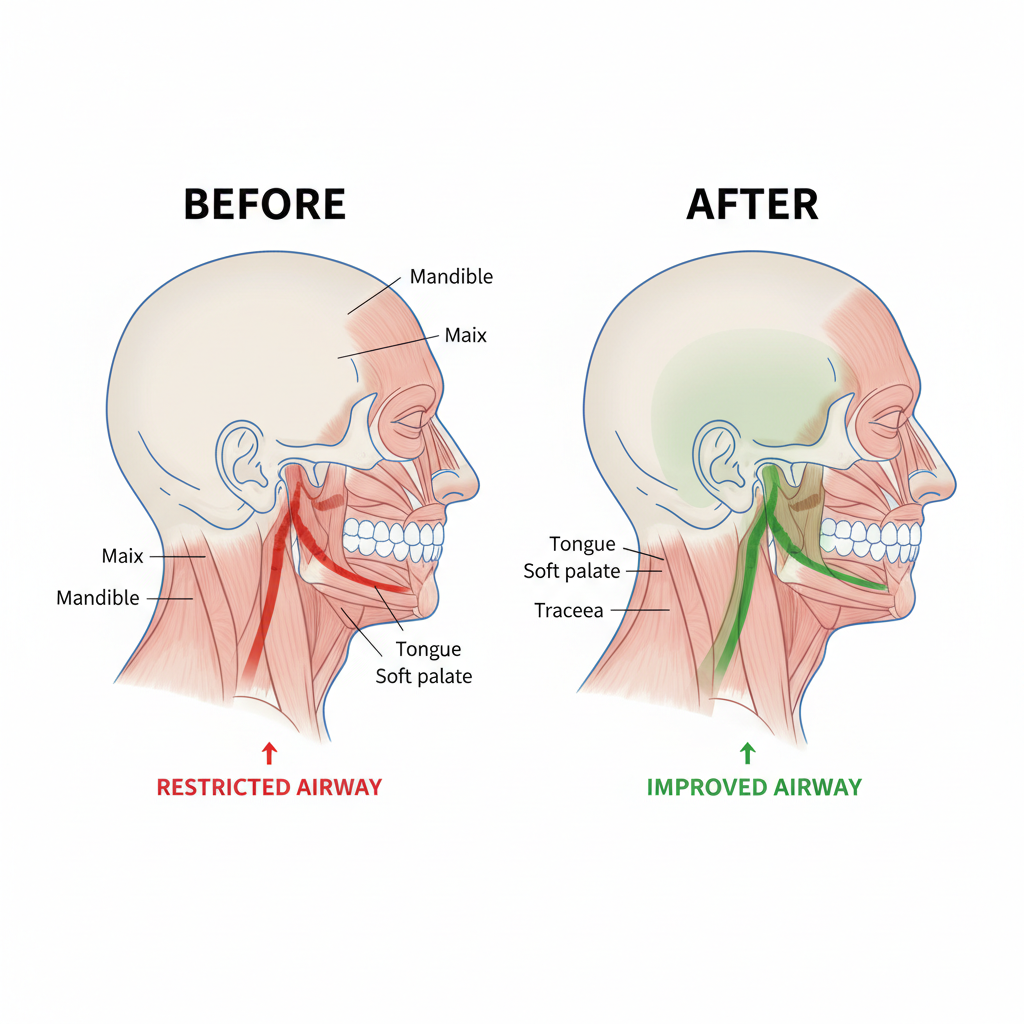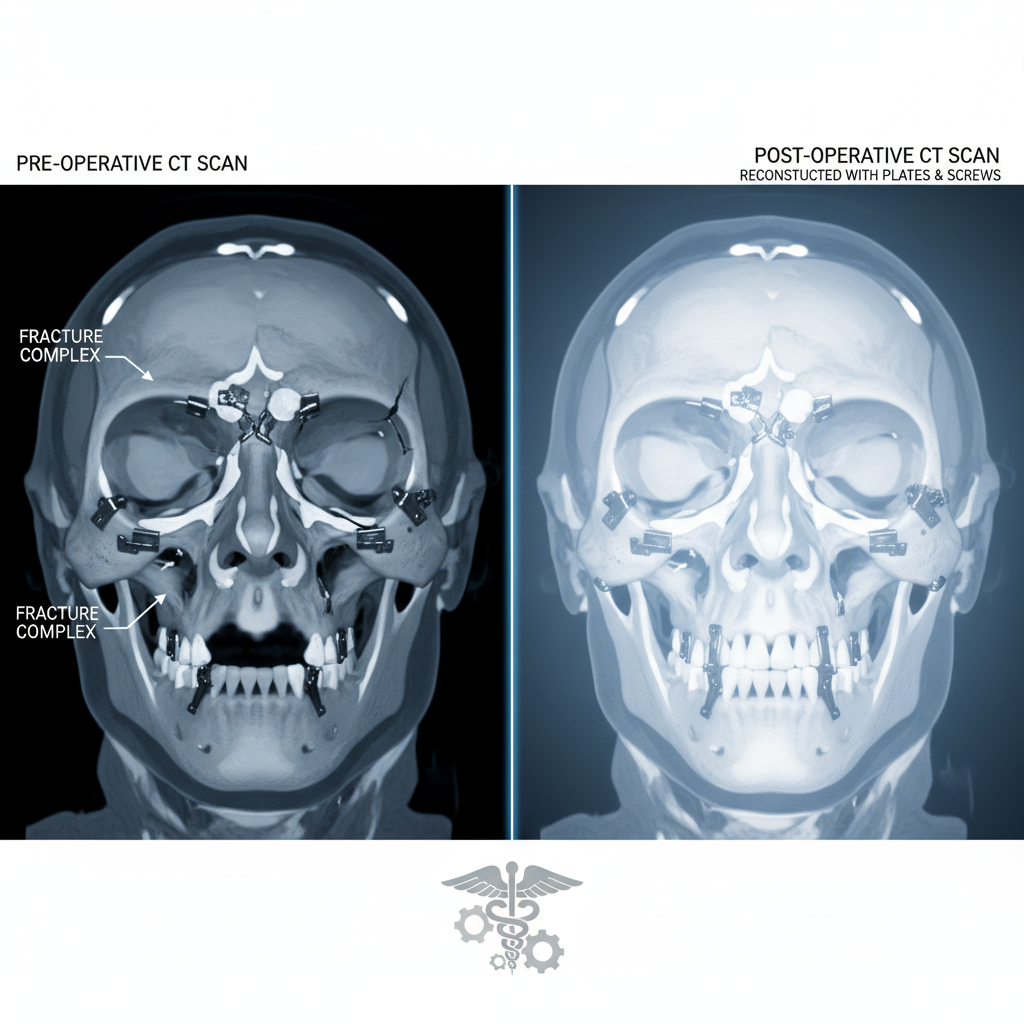Are you struggling with a misaligned lower jaw that affects your smile and overall facial harmony? Look no further! Bilateral sagittal split osteotomy (BSSO) is the solution for you. This transformative surgical procedure has the power to reshape your jaw, improving both your oral function and aesthetics.
BSSO is a well-established technique frequently used in orthognathic surgery to correct jaw discrepancies such as overbites and underbites. By carefully splitting the lower jaw along a sagittal plane, surgeons can reposition the jaw for optimal alignment and function. The procedure is precise and customizable, ensuring that each patient’s unique needs are met.
The benefits of BSSO extend far beyond just a straighter smile. By correcting the alignment of the jaw, patients can experience improved chewing and speech abilities, reduced jaw pain, and enhanced facial balance.
Undergoing BSSO requires a team of highly qualified professionals, including oral and maxillofacial surgeons and orthodontists, working together to achieve outstanding results. If you’re ready to transform your smile and regain your self-confidence, BSSO may be the answer you’ve been searching for. Say goodbye to jaw misalignment and hello to a beautiful, harmonious smile with BSSO.
What is a bilateral sagittal split osteotomy
Bilateral sagittal split osteotomy (BSSO) is a surgical procedure used to correct jaw discrepancies by repositioning the lower jawbone. It is a well-established technique in orthognathic surgery, aimed at improving both the function and aesthetics of the jaw. During the procedure, the lower jawbone is carefully split along a sagittal plane, allowing the surgeon to reposition it for optimal alignment.
This procedure is typically performed under general anesthesia, ensuring the patient’s comfort throughout. The surgeon makes precise incisions in the jawbone and carefully splits it, allowing for repositioning. Once the desired alignment is achieved, the jawbone is secured in place using plates, screws, or wires. The incisions are then closed, and the healing process begins.
BSSO is a customizable procedure, tailored to each patient’s specific needs. The surgeon carefully evaluates the jaw discrepancies and plans the surgery accordingly, ensuring optimal results. By addressing both functional and aesthetic concerns, BSSO can have a transformative impact on a patient’s smile and overall facial harmony.
When is bilateral sagittal split osteotomy needed
Bilateral sagittal split osteotomy (BSSO) is often recommended for individuals with jaw discrepancies that affect their oral function and facial aesthetics. Some common indications for BSSO include:
- Overbite: When the upper teeth significantly overlap the lower teeth, it can result in functional issues such as difficulty biting and chewing, as well as aesthetic concerns.
- Underbite: In cases where the lower jaw protrudes beyond the upper jaw, it can lead to problems with biting, speech, and facial balance.
- Open bite: An open bite occurs when the upper and lower teeth do not touch when the mouth is closed. It can cause speech difficulties and affect the overall appearance of the smile.
- Facial asymmetry: If one side of the jaw is significantly different from the other, it can affect facial harmony and balance.
BSSO is considered when more conservative treatment options, such as orthodontics alone, are unable to address the underlying jaw discrepancies. It is important to consult with an oral and maxillofacial surgeon to determine if BSSO is the right treatment approach for your specific condition.

Benefits of bilateral sagittal split osteotomy
Undergoing bilateral sagittal split osteotomy (BSSO) can offer a range of benefits beyond just a straighter smile. Here are some of the advantages that patients can experience:
- Improved oral function: By correcting jaw discrepancies, BSSO can enhance chewing and speech abilities. Proper alignment of the jaws allows for more efficient biting and chewing, reducing strain on the jaw joints and muscles.
- Enhanced facial aesthetics: BSSO not only improves the function of the jaw but also enhances facial balance and harmony. By repositioning the lower jaw, BSSO can create a more attractive and balanced facial profile.
- Reduced jaw pain: Jaw misalignment can often lead to chronic jaw pain and discomfort. By correcting the alignment through BSSO, patients can experience relief from jaw pain and related symptoms.
- Increased self-confidence: A misaligned jaw can significantly impact a person’s self-esteem and confidence. BSSO can transform a smile, giving patients renewed self-confidence and a positive self-image.
It is important to note that the specific benefits of BSSO may vary depending on each individual’s unique case. Consulting with an experienced oral and maxillofacial surgeon is crucial to understand the potential outcomes and benefits specific to your situation.
The procedure for bilateral sagittal split osteotomy
The bilateral sagittal split osteotomy (BSSO) procedure is a complex surgical technique that requires the expertise of an oral and maxillofacial surgeon. Here is an overview of the steps involved in the BSSO procedure:
- Pre-operative planning: Before the surgery, the surgeon will conduct a comprehensive evaluation of the patient’s jaw discrepancies using diagnostic imaging such as X-rays and 3D scans. This allows for precise planning and customization of the procedure to address the individual’s specific needs.
- Anesthesia: BSSO is typically performed under general anesthesia to ensure the patient’s comfort and safety throughout the procedure. The patient will be asleep and unaware of the surgery taking place.
- Incisions and bone preparation: The surgeon makes precise incisions inside the mouth to access the lower jawbone. Careful attention is given to preserve the nerves and blood vessels in the area. The jawbone is then carefully split along a sagittal plane, allowing for repositioning.
- Repositioning and fixation: Once the jawbone is split, the surgeon repositions it to the desired alignment. Titanium plates, screws, or wires are used to secure the jawbone in its new position. The fixation hardware provides stability during the healing process.
- Closure and recovery: After the repositioning of the jawbone, the incisions are carefully closed using dissolvable sutures. The patient is then monitored in the recovery room to ensure a smooth transition from anesthesia. Pain medication and antibiotics may be prescribed to manage discomfort and prevent infection.
- Post-operative care: Following the surgery, patients will require a period of rest and recovery. A liquid or soft food diet may be recommended initially, gradually transitioning back to a normal diet over time. The oral and maxillofacial surgeon will provide specific post-operative instructions and schedule regular follow-up appointments to monitor healing progress.
It is important to note that the exact details of the BSSO procedure may vary depending on the individual patient’s needs and the surgeon’s preferences. Consulting with a skilled oral and maxillofacial surgeon is essential to understand the specific details and expectations for your surgery.
Recovery and aftercare for bilateral sagittal split osteotomy
After undergoing bilateral sagittal split osteotomy (BSSO), a proper recovery and aftercare plan is crucial for optimal healing and outcomes. Here are some important considerations during the recovery period:
- Pain management: Some discomfort and swelling are expected after BSSO surgery. The surgeon may prescribe pain medication to manage any post-operative pain. Applying ice packs to the face can also help reduce swelling and discomfort.
- Diet modifications: Following BSSO, the patient’s diet may need to be modified temporarily. Initially, a liquid or soft food diet is typically recommended to ensure proper healing of the jawbone. As the healing progresses, the diet can gradually be transitioned back to normal, solid foods.
- Oral hygiene: Maintaining good oral hygiene is crucial during the recovery period. The surgeon will provide specific instructions on how to clean the mouth, including gently brushing the teeth and rinsing with prescribed mouthwashes. It is important to follow these instructions to prevent infection and promote healing.
- Rest and recovery: Adequate rest is essential for the healing process. Patients should avoid strenuous activities, exercise, and heavy lifting during the initial recovery period. It is important to follow the surgeon’s recommendations regarding rest and activity restrictions.
- Follow-up appointments: Regular follow-up appointments with the oral and maxillofacial surgeon are necessary to monitor the healing progress. The surgeon will assess the recovery, remove any sutures if necessary, and ensure that the jaw is healing properly.
It is important to follow all post-operative instructions provided by the surgeon to minimize the risk of complications and ensure a smooth recovery. Each patient’s recovery timeline may vary, but most individuals can expect significant improvement within a few weeks to months after BSSO surgery.

Risks and complications of bilateral sagittal split osteotomy
Like any surgical procedure, bilateral sagittal split osteotomy (BSSO) carries certain risks and potential complications. It is essential to be aware of these possibilities and discuss them thoroughly with the oral and maxillofacial surgeon before proceeding with the surgery. Here are some potential risks and complications associated with BSSO:
- Nerve damage: The nerves responsible for sensation in the lower lip and chin are in close proximity to the lower jawbone. During the surgery, there is a risk of nerve damage, which can result in temporary or permanent numbness or altered sensation in the lower lip and chin. The surgeon will take precautions to minimize this risk, but it is important to discuss it beforehand.
- Infection: Any surgical procedure carries a risk of infection. The surgeon will prescribe antibiotics to minimize the risk, and it is crucial to follow all post-operative care instructions to prevent infection.
- Malocclusion: In some cases, the repositioning of the lower jawbone may not result in an ideal bite alignment. This can lead to malocclusion, where the upper and lower teeth do not fit together properly. Additional orthodontic treatment may be required to address this issue.
- Relapse: There is a possibility of relapse, where the corrected jaw position gradually shifts back towards its original misalignment. The surgeon will take steps to minimize this risk, but it is important to follow the post-operative instructions and attend regular follow-up appointments.
- Healing complications: Some individuals may experience delayed or impaired healing, leading to complications such as infection or bone non-union. Following the post-operative care instructions provided by the surgeon is crucial to minimize these risks.
It is important to note that the risks and complications associated with BSSO are relatively rare, and most patients experience successful outcomes. The oral and maxillofacial surgeon will thoroughly evaluate each patient’s case and discuss the potential risks and benefits before proceeding with the surgery.
Alternatives to bilateral sagittal split osteotomy
Bilateral sagittal split osteotomy (BSSO) is a highly effective procedure for correcting jaw discrepancies, but it may not be the appropriate treatment option for everyone. Depending on the specific case, there may be alternative approaches to consider. Here are some alternatives to BSSO:
- Orthodontic treatment: In some cases, orthodontic treatment alone may be sufficient to address minor jaw discrepancies. Braces or clear aligners can help align the teeth and improve facial aesthetics without the need for surgical intervention.
- Genioplasty: Genioplasty is a surgical procedure specifically focused on reshaping the chin. It can be performed in isolation or in combination with BSSO to achieve the desired facial harmony and balance.
- Orthognathic distraction osteogenesis: This alternative surgical technique involves gradually lengthening or repositioning the jawbone using a distraction device. It may be recommended in cases where BSSO is not feasible or may not yield optimal results.
- Camouflage orthodontics: Camouflage orthodontics refers to a combination of orthodontic treatment and dental restorations, such as veneers or crowns, to improve the appearance of the smile without surgical intervention.
The suitability of each alternative option depends on the specific jaw discrepancies and the patient’s goals and preferences. Consulting with an experienced oral and maxillofacial surgeon and orthodontist is essential to determine the most appropriate treatment approach for each individual case.
Finding a skilled oral and maxillofacial surgeon for bilateral sagittal split osteotomy
Undergoing bilateral sagittal split osteotomy (BSSO) is a significant decision that requires the expertise of a skilled oral and maxillofacial surgeon. Here are some key considerations to keep in mind when searching for a surgeon:
- Board certification: Ensure that the surgeon is board-certified in oral and maxillofacial surgery. Board certification indicates that the surgeon has met rigorous standards and has undergone additional training and education in their specialty.
- Experience and expertise: Look for a surgeon who has extensive experience performing BSSO procedures. Ask about the surgeon’s surgical volume and success rates. A surgeon who regularly performs BSSO surgeries is likely to have the necessary skills and expertise.
- Patient testimonials and before/after photos: Review patient testimonials and before/after photos to get an idea of the surgeon’s results and patient satisfaction. This can give you confidence in the surgeon’s abilities and outcomes.
- Referrals and recommendations: Seek referrals and recommendations from trusted sources, such as your dentist or orthodontist. They can provide insights into the reputation and quality of care provided by different surgeons.
- Consultation: Schedule a consultation with the surgeon to discuss your specific case and ask any questions you may have. Pay attention to the surgeon’s communication style, willingness to listen, and ability to address your concerns.
Remember, choosing the right surgeon is crucial for a successful outcome. Take the time to research and find a surgeon who instills confidence and has a track record of delivering excellent results.
Success stories and patient experiences with bilateral sagittal split osteotomy
Understanding the experiences of other patients who have undergone bilateral sagittal split osteotomy (BSSO) can provide valuable insights and reassurance for those considering the procedure. Let’s explore a few success stories and patient experiences with BSSO.
Case Study 1: Emily’s Journey to a Perfect Smile
Emily, a 28-year-old woman, had been struggling with a severe underbite that affected her chewing ability and self-confidence. After consulting with an oral and maxillofacial surgeon, she decided to undergo BSSO to correct her jaw misalignment. The surgery was a success, and Emily experienced a dramatic improvement in both her bite and facial aesthetics. She can now confidently smile and enjoy her favorite foods without any discomfort.
Case Study 2: Tom’s Transformational Journey
Tom, a 34-year-old man, had always felt self-conscious about his receding chin and weak jawline. After extensive research, he chose to undergo BSSO to enhance his facial harmony and restore his confidence. The procedure not only addressed his aesthetic concerns but also improved his speech and chewing abilities. Tom’s journey with BSSO has been life-changing, giving him the smile and facial balance he had always dreamed of.
These success stories highlight the transformative power of BSSO in correcting jaw discrepancies and improving overall oral function and aesthetics. Each patient’s journey is unique, and the outcomes will vary depending on individual circumstances. However, these stories serve as inspiration for those considering BSSO and showcase the potential positive impact it can have on one’s quality of life.

Conclusion: Transforming smiles with lower jaw surgery
Bilateral sagittal split osteotomy (BSSO) is a transformative surgical procedure that can correct jaw discrepancies and transform smiles. The procedure, performed by skilled oral and maxillofacial surgeons, involves carefully splitting the lower jaw along a sagittal plane and repositioning it for optimal alignment and function. The benefits of BSSO extend beyond just aesthetic improvements, with patients experiencing enhanced chewing and speech abilities, reduced jaw pain, and improved facial balance.
Finding a skilled surgeon who specializes in BSSO is crucial for a successful outcome. Take the time to research and choose a board-certified oral and maxillofacial surgeon who has extensive experience with BSSO and a track record of successful outcomes. Consultations with potential surgeons will allow you to evaluate their expertise and proposed treatment plan, ensuring you feel confident and comfortable in their care.
Patient success stories and experiences provide valuable insights and reassurance for those considering BSSO. Hearing how others have benefited from the procedure can inspire and motivate individuals to pursue treatment and achieve their desired smile transformation.
If you’re struggling with a misaligned lower jaw that affects your smile and overall facial harmony, consider bilateral sagittal split osteotomy as a solution. With the help of a skilled surgeon, you can embark on a transformative journey towards a beautiful, harmonious smile. Say goodbye to jaw misalignment and hello to renewed self-confidence with BSSO.





